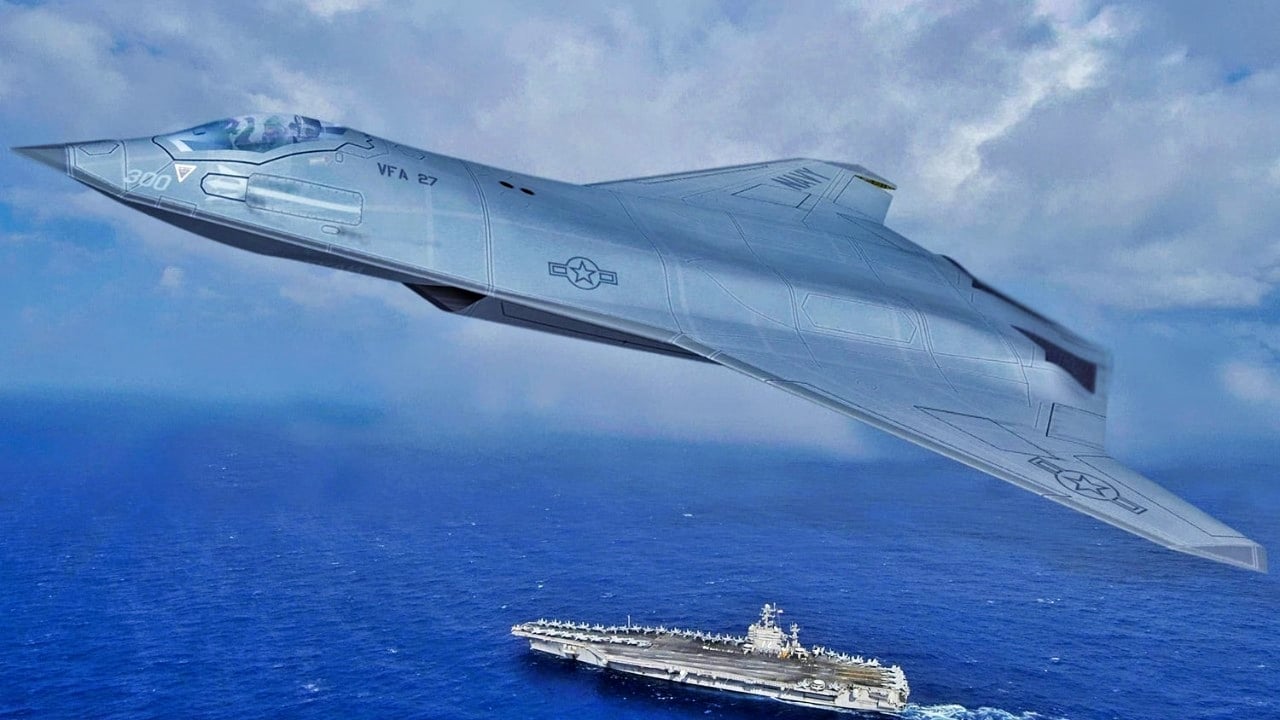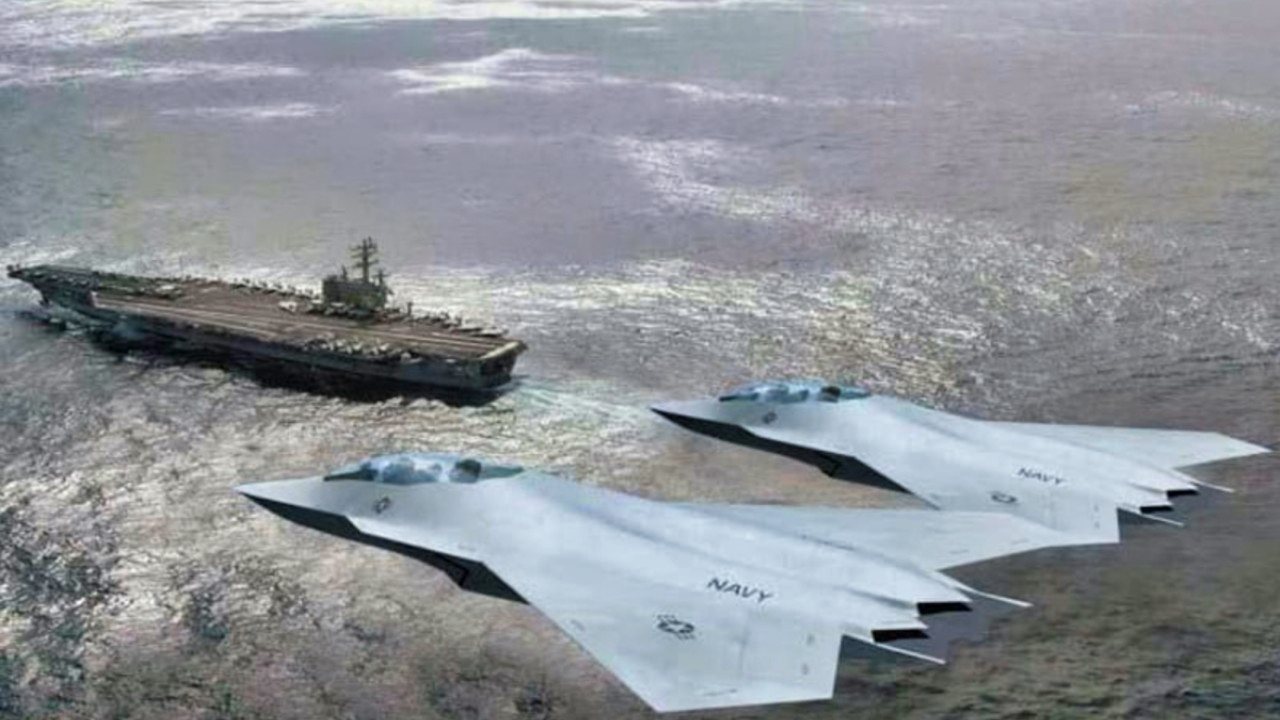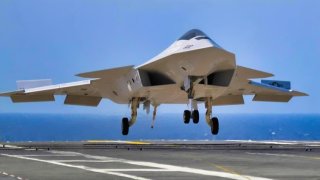Forget NGAD: The Navy's F/A-XX 6th Generation Stealth Fighter Won't 'Crash'
The U.S. Navy’s sixth-generation fighter program, the F/A-XX, is progressing toward potential service in the 2030s, possibly preceding the U.S. Air Force’s delayed Next-Generation Air Dominance (NGAD) program.
What You Need to Know: The U.S. Navy’s sixth-generation fighter program, the F/A-XX, is progressing toward potential service in the 2030s, possibly preceding the U.S. Air Force’s delayed Next-Generation Air Dominance (NGAD) program.

-The F/A-XX, designed to replace the F/A-18 E/F Super Hornet and Growler airframes, will feature advanced sensors, range, and stealth capabilities, with integration of unmanned platforms like Collaborative Combat Aircraft (CCAs).
-However, budgetary challenges may pose a threat, as seen with the Air Force's NGAD, which was paused due to its high costs. With rising geopolitical tensions, the F/A-XX’s success is critical to maintaining U.S. air dominance.
Navy’s F/A-XX Sixth-Generation Fighter Could Outpace Air Force’s NGAD Program
The U.S. Navy may achieve its sixth-generation fighter program before the Air Force’s parallel objective. According to the service, the upcoming F/A-XX platform could be realized in the 2030s. If all goes to plan, the new fighter- equipped with cutting-edge technologies and capabilities- will enter service before the Air Force’s Next-Generation Air Dominance (NGAD) airframe which has been placed on temporary hold.
As detailed by Chief of Naval Operations Admiral Lisa Franschetti, the service expects the new fighter to feature, “advanced sensors, advanced lethality, advanced range,” and the ability to, “integrate with manned and unmanned capabilities together.” This announcement indicates progress in the Navy’s new program, especially after major funding setbacks appeared to delay its fruition last spring.
While the service is still grappling with budget deficits in many areas, its prioritization of bringing the F/A-XX program to life comes at a pivotal moment when geopolitical tensions are heightened worldwide.
What We Know About F/A-XX
Over a decade ago, the Navy first outlined its intention of seeking out a replacement carrier-launched fighter jet to replace the F/A-18 E/F Super Hornet and Growler airframes. The new jet was conceptualized to fly alongside the F-35C Lightning II and UCLASS unmanned aircraft. Perhaps most significantly, the F/A-XX will be designed to operate in anti-access/area denial environments to more effectively thwart the People's Republic of China’s growing arsenal of advanced weapons systems.
To carry out this task, the upcoming airframe is expected to be equipped with all the latest stealth features, including the networking adaptability displayed by the F-35 platform. The big-name manufacturers, Boeing, Lockheed Martin, and Northrop Grumman, all announced they were competing for the aircraft’s design contract. Additionally, Pratt & Whitney and OEMS GE Aerospace were revealed to be competing to secure the F/A-XX’s engine contract.
Will Budgetary Concerns Ultimately Hold Back the Sixth-Gen Program?
While many details surrounding the F/A-XX program remain highly classified, the service has divulged that the fighter will be designed to operate alongside uncrewed platforms including Collaborative Combat Aircraft (CCAs). Like the Air Force’s NGAD platform, the Naval fighter will fly alongside these loyal “wingmen drones” to lower overall program costs. However, the service may need to dial down the price tags in other areas to ensure it doesn’t require the budgetary hold currently stagnating the Air Force’s NGAD program.

One of the primary drivers behind NGAD’s pause is its overall price, according to Air and Space Forces. Secretary of the Air Force Frank Kendall paused NGAD this summer after indicating the service would only return to it if the price dropped by nearly fifty percent, from around $200 million to $100 million.
Tensions between Beijing and Washington in the South Pacific are only rising, requiring the imminent arrival of next-generation aerial technology for security reasons. While NAGD is temporarily paused, the Navy’s F/A-XX program should certainly be prioritized to ensure China and other adversaries don’t achieve sixth-gen technology before the U.S. does.
About the Author: Maya Carlin
Maya Carlin, National Security Writer with The National Interest, is an analyst with the Center for Security Policy and a former Anna Sobol Levy Fellow at IDC Herzliya in Israel. She has by-lines in many publications, including The National Interest, Jerusalem Post, and Times of Israel. You can follow her on Twitter: @MayaCarlin.
Image Credit: Creative Commons and/or Shutterstock.


